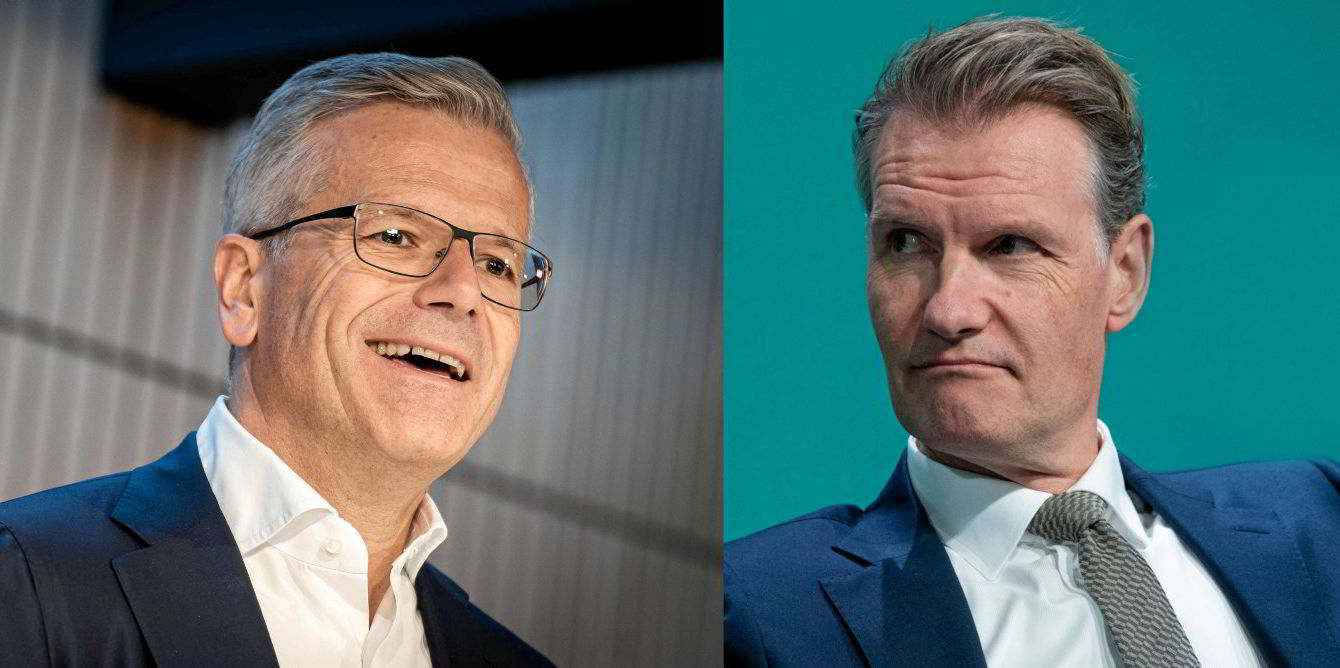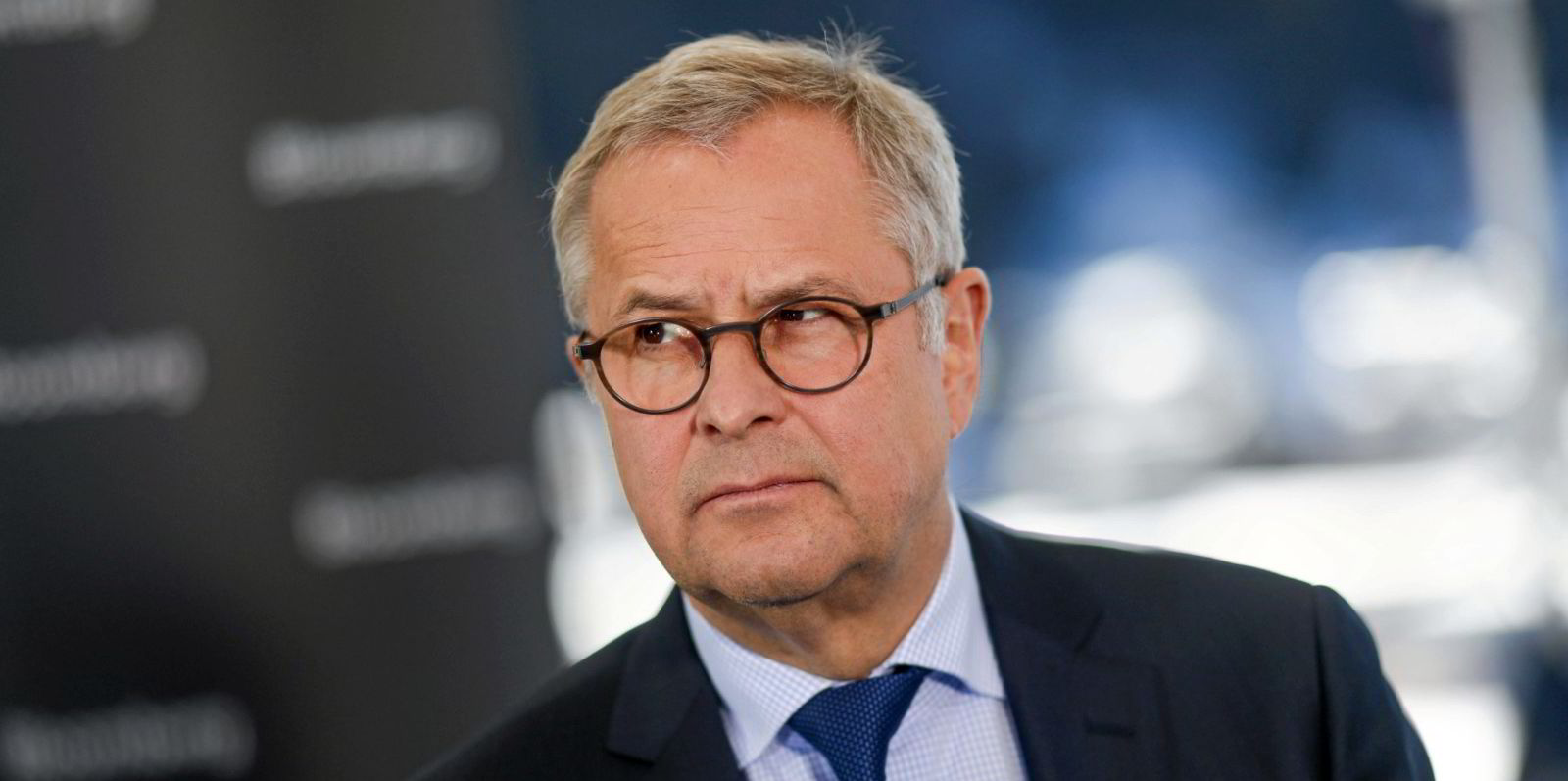If Maersk and MSC Mediterranean Shipping Company getting together to form a container line alliance was a surprise in 2015, it was an equal shock on Wednesday when they announced they would end it in two years.
But the issues that made it an unlikely pairing then, liner shipping’s version of the 1968 film The Odd Couple, still exist today, and there are possibly more of them and they are more pertinent.
The two carriers historically had very different commercial cultures, with MSC founder Gianluigi Aponte vehemently against alliances, wanting to be in sole control of his own company’s destiny and happy to buy cheap ships and run cut-price services.
AP Moller-Maersk always focused on building modern ships and running high-quality services, and it said on Wednesday: “Discontinuing the 2M alliance paves the way for both companies to continue to pursue their individual strategies.”
They were an odd couple, like the film starring Jack Lemmon and Walther Matthau as two divorced men: a neurotic neat-freak and fun-loving slob who have to live together.
Back in 2015 the pairing of the two biggest container lines was also originally intended to comprise the big three, and include CMA CGM.
Antitrust issues killed that idea and CMA CGM was cast off — eventually settling for an alliance with Asian lines Evergreen and Cosco.
Little more than a month ago, MSC chief executive Soren Toft said the 2M alliance, which was due for renewal in 2025, was safe.
But then at that stage he would have to say that even though we now know discussions to end it were underway.
‘Injection of stability’
The alliance was set up when, in MSC’s words, “the ocean carrier industry needed an injection of stability”. Since then, the world has arguably got less stable.
The Covid pandemic, followed by Russia’s war on Ukraine, a downturn in trade, rise in fuel costs and the need for decarbonisation strategies to be put in place over the next few years have all caused volatility.
But these factors all also point to reasons why the 2M’s time might have come.
The pandemic led to a consumer boom in buying goods, while lockdowns and port delays led to transport inefficiencies that meant container freight rates went through the roof. That angered both shippers and politicians.
Foreign lines became an easy target for anti-trust sentiment in the US, where President Joe Biden issued an executive order to take a closer look at competition in container shipping.
Analysts were loath to speculate on the record on Wednesday about why 2M is being unwound, but in private they ask whether MSC decided it needs to move now to get ahead of political action that might later force its hand.
MSC’s secondhand-ship buying spree has added about 250 vessels to its fleet in the past two years, and it said on Wednesday it is expanding its fleet to achieve “the scale we need for the most comprehensive ocean and shortsea shipping network in the market”.
That points to a potential ambition to go it alone as by far and away the biggest carrier, while over the same period, Maersk has repeatedly and pointedly said it is happy with its market share. It currently has only 28 vessels on order.

“Growing the fleet substantially opens the path to a future where MSC achieves a scale whereby they no longer need to be a member of an alliance,” analyst Lars Jensen of Vespucci Maritime told TradeWinds last November.
MSC also said on Wednesday that alongside the largest fleet, orderbook and network coverage, it was creating “a growing portfolio of shipping, inland, logistics and digital solutions, as well as its emerging air cargo offering”.
Maersk has also been buying up logistics companies and developing transport hubs as it looks to position itself as an integrator of distribution modes.
Maersk’s chief product officer of ocean products, Johan Sigsgaard, appointed under new chief executive Vincent Clerc’s reorganised executive leadership team, told TradeWinds this was its main rationale for quitting the 2M — that it saw a “unique strategy as an integrated” transport company differing from MSC.
Sigsgaard added that Maersk had encountered no anti-trust issues with the "M.
Total control of door-to-door logistics has been made possible by the exorbitant profits made from box freight rates over the past few years, allowing the acquisition of other transport companies.
It could also intriguingly suggest that rather than their strategies diverging, Maersk and MSC are actually coming into greater competition with each other, and might end up “treading on each others’ toes”, as one analyst suggested.
However, there are differences emerging that could play a part in making a further 10-year agreement to work together harder to manage in the years from 2025 to 2035.
Maersk is pushing ahead with orders for ships that can burn greener fuels, especially e-methanol, and is also looking to secure sourcing of supplies of those fuels through deals with their producers in various parts of the world.
Further reshuffles
MSC has so far leaned more towards LNG fuelling of its more modern ships.
Operating vessel-sharing services might become technically more difficult in future if the ships burn different fuels, and it is likely to add to the cost for shippers.
It is possible MSC is less committed to making that commercial proposition work than Maersk.
Whatever the mix of reasons for a divorce, if it has been pushed by MSC wanting to go it alone, then the question remains what does Maersk do next? And will there be another membership reshuffle of the major liner alliances?
Maersk could fall back on the idea of partnering CMA CGM, which was historically stronger in China and the transpacific trades than it, or with other Asian lines. Zim is another option, having worked with the 2M alliance at times.
But the other alliances contractually last beyond 2025, meaning that changes around that date when Maersk is left on its own are less likely.






